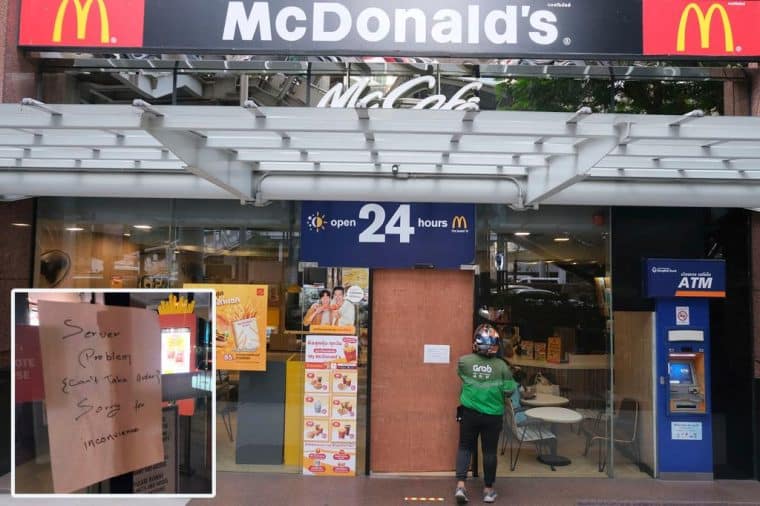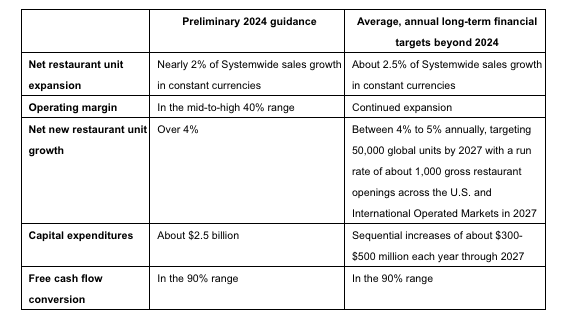McDonald’s restaurants around the world were brought to a standstill on Friday as the fast-food giant suffered a major technology outage that disrupted operations in dozens of countries across multiple continents.
The unprecedented system failure forced many locations to temporarily suspend service or revert to taking orders manually using old-fashioned pen and paper for hours.
The timing of the crippling incident could not be more fitting – it occurred just three months after McDonald’s announced a blockbuster deal with Google to overhaul its tech infrastructure and bring artificial intelligence and cloud computing into its thousands of restaurants globally. That strategic partnership was meant to usher in a new era of digital transformation for the Golden Arches, but it seems like it was a bit too late to prevent the IT disaster.
Instead, on Friday, customers from Australia to the United States were met with blank kiosk screens, non-functioning mobile apps, and frustrated employees scrambling to keep their venues open despite the meltdown.
Consumers Report Long Lines and Disgruntled Employees

Reports of long lines, widespread closures, and general chaos flooded social media as the tech issues persisted for hours in some markets before gradually being resolved.
“We are aware of a technology outage, which impacted our restaurants globally; the issue is now being resolved”, a McDonald’s Corporation spokesperson told CNN earlier. “We thank customers for their patience and apologize for any inconvenience this may have caused.”
The company was quick to clarify that the outage was not caused by a cybersecurity incident, refuting speculation that it may have fallen victim to a malicious hacking attempt. However, not many details were provided about the root cause or the full scope of the failure.
List of Countries Affected by the Outage
The outage appears to have hit McDonald’s operations on nearly every continent, based on a sampling of the disruptions reported by major media outlets:
- Japan: McDonald’s Japan said “many stores” across the country had to temporarily suspend operations entirely due to the “system failure,” as self-order kiosks and employee terminals malfunctioned.
- Australia: A spokesperson confirmed the outage affected restaurants “nationwide” and apologized as locations scrambled to reopen by taking cash-only orders.
Dear customers,
Earlier today, we experienced a technology outage which impacted all of our restaurants.
This wasn’t related to a cybersecurity event and most restaurants have now re-opened and are serving up all your faves.
A huge thank you to our customers and our…
— McDonald's Australia (@maccas) March 15, 2024
- United Kingdom: Workers and customers reported issues processing both in-store and mobile app orders at locations across the country during peak breakfast and lunch hours.
- United States: While the extent is unclear, customers from New York to the West Coast complained on social media about non-functioning kiosks and mobile ordering.
- China: McDonald’s said on Chinese social media that its outlets were unable to accept mobile orders or process kiosk transactions due to a “computer system failure.”
- Taiwan: The company’s McDelivery service posted alerts that the “system is under maintenance” and all ordering capabilities were suspended.
- Hong Kong, Germany, Netherlands, Canada, and beyond: Tech issues at McDonald’s restaurants in these countries were also documented across the internet as the day unfolded.
An Embarrassing Moment for McDonald’s and Its Modernization Plan
Such a sweeping international outage is highly embarrassing for McDonald’s, which had placed a massive bet just months ago on Google’s cloud computing prowess to modernize its technology backbone.
The deal was meant to enable the implementation of tools like AI-powered speech recognition at drive-thrus, computer vision to monitor food quality, and predictive analytics to streamline kitchen operations.
Instead, McDonald’s found itself in the throes of an epic “tech nightmare,” as one analyst described it – forced to revert to pen and paper at the height of the digital age.
While the impact was particularly severe in McDonald’s Asian markets like Japan where the chain has a major footprint, the issues reverberated across the company’s home turf as well. A worker at a McDonald’s in New York told CNN that the store’s system first crashed around 1 am local time before finally coming back online around 5 am.
Meanwhile, in London, an employee reported having to manually take orders from 6 to 7 a.m. and relay them to the kitchen amid the outage. This might seem like a relatively minor issue, but it had a massive impact on the company and especially franchise owners.
The situation likely created significant product wastage, labor disruptions, and loss of sales for a company that operates over 40,000 locations in more than 100 countries. Outages of shorter duration are common, but an incident of this magnitude is highly unusual.
McDonald’s Will be Spending $2.5 Billion This Year in its Modernization Plan

McDonald’s is in the midst of a digital transformation led by CEO Chris Kempczinski, who took over in 2019 and has made technology investment a key priority. According to the firm’s recently released blueprint for “new targets”, its systems will start to be backed by Google Cloud starting in 2024.
“… beginning in 2024, the Company will begin to deploy new, universal software that all McDonald’s customer and restaurant digital platforms will run on – from the mobile app to loyalty and kiosks in store.”, the press release reads.
That’s what made the partnership with Google so crucial – providing cutting-edge capabilities like AI, data analytics, and cloud computing that McDonald’s previously lacked.
Under the multi-year agreement, the two companies are collaborating to build out McDonald’s digital platforms from mobile ordering to self-serve kiosks to kitchen operations. Thousands of locations will eventually run Google’s Distributed Cloud Edge services on-premises.
McDonald’s forecasted $2.5 billion in capital expenditures for 2024 and gradual increments ranging from $300 to $500 million every subsequent year. These investments include its modernization plans across its thousands of stores.
“With Google Cloud’s edge computing capabilities, McDonald’s will be able to draw new insights into how equipment is performing, enact solutions that reduce business disruptions, and diminish complexity for crew so restaurant teams can focus on delivering amazing hospitality to customers.”, the companies said in a joint statement published on December 2023.
However, Friday’s outage laid bare how McDonald’s underlying tech infrastructure remains incredibly frail compared to modern digitally-native businesses. The episode will likely accelerate efforts to deploy Google’s solutions across more restaurants to improve resiliency.
For now, Kempczinski will surely face tough questions about how to prevent such debacles from occurring as McDonald’s strives to offer the same amazing digital experiences as big tech behemoths like Google.
While the Google partnership demonstrates that McDonald’s is taking that tech transformation seriously, Friday’s events reveal that the Golden Arches company still has a long way to go before achieving its ideal state of digitalization.
